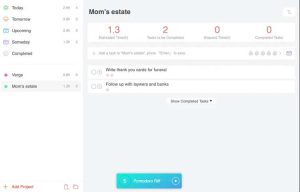Centering never used to be an issue for me. I was the irritating youngster who could read up for eight to 10 hours all at once without objection. That proceeded with well into adulthood until I encountered my own series of appalling occasions. Over the most recent four years, my folks and our kid canine all passed on in quick progression from hopeless neurodegenerative illnesses. It didn’t help that it occurred close by a rare worldwide pandemic. Furthermore, on the grounds that I’m a virtuoso, I chose to make computerized media my meat and potatoes, an industry kept intact by fraying pipe tape and cerebrum worms.
Obviously, I got going 2022 as a train wreck. All that time spent doomscrolling and lamenting left my concentration wrecked. Things spiraled to where I’d stroll into a room, fail to remember why I was there, return to the room I came from, recollect what I should do, stroll once more into the main room, and forget once more. Yet, the truth of adulthood is you just have a month prior to you’re supposed to look like a working human once more. My concern was I didn’t have any idea how. Shockingly, my response was a tomato clock.
Pomodoro clocks are an instrument utilized with the Pomodoro Procedure. Created during the 1980s by Francesco Cirillo, the thought is to give 25 continuous minutes to an undertaking. At the point when you’re finished, you can take a five-to 10-minute break. Every 25-minute span is known as a Pomodoro, and after four Pomodoros, you can require a more drawn out 15 brief break. Assuming that you finish early, you utilize the excess chance to either survey your work or plan forthcoming Pomodoros. You can likewise change the length of stretches and breaks to what turns out best for you.
I’ve utilized Pomodoro clocks now and again for as far back as decade (maybe longer), however they never truly stuck. I for the most part involved them in my school days to read up for tests. And, surprisingly, then, at that point, I messed around with really utilizing the clock.
This time was different.

On top of work deadlines, I also had to plan funerals at home and in South Korea. I had to consult with probate lawyers, learn how to be an executor of my parents’ estates, deal with real estate sharks, and even spend 45 minutes explaining to a Citibank rep that my mom was dead and couldn’t come to the phone. I never knew where to start because everything was urgent, and my to-do lists resembled CVS receipts. Worst of all, I could barely focus on anything for more than a few minutes at a time. What I needed was a Pomodoro timer with a built-in to-do list.
After poking around the internet, I landed on Focus To-Do. I didn’t expect much — it’d never stuck before, so why would it now? I messed up a bunch, but at the end of the first week, I noticed one small improvement: I was a lot better at getting little things done. You know, the tiny annoying tasks that need to get done but constantly get put on the back burner. Those tasks always leave me anxious, but that week I felt immense relief.
The Focus To-Do app gives you an estimate of how many hours your list will take. That, in turn, helped me to better visualize what I could reasonably get done today and what had to be moved to the next day. It also taught me how long I spent on recurring tasks. For instance, I now know it takes me six to eight Pomodoros to write 2,000 words.
Meanwhile, my little breaks were a chance to steal back some time for myself. Instead of browsing Twitter to acquire more brain worms, I forced myself to leave my desk. My rule was I could do anything I wanted so long as I wasn’t chained to my keyboard. I’d pick up packages, water my plants, or declutter my kitchen counter. For longer breaks, I’d go for a walk outside or play with my rotund cat. During my grief, it always felt like I couldn’t do anything I enjoyed. It expanded into every aspect of my life, leaving me unable to do much more than show up to work. But what this silly little timer did was create space for me to relax — knowing the work would get done. For the first time in a long time, I’m starting to feel like myself again.
None of this happened overnight. It happened gradually over the course of this year. I didn’t even notice how much had changed until a few weeks ago. Everyone has their own way of dealing with grief and the mental fog of the past three years. But if, like me, you’ve been scrambling for a way to organize your time, this is a free, widely available tool to try. You don’t have to use the one I do or follow the Pomodoro Technique to the letter. (I definitely don’t.) You could use an actual kitchen timer or an app on your phone. But sometimes, you just need a little push. Tomato timers are great for that.




